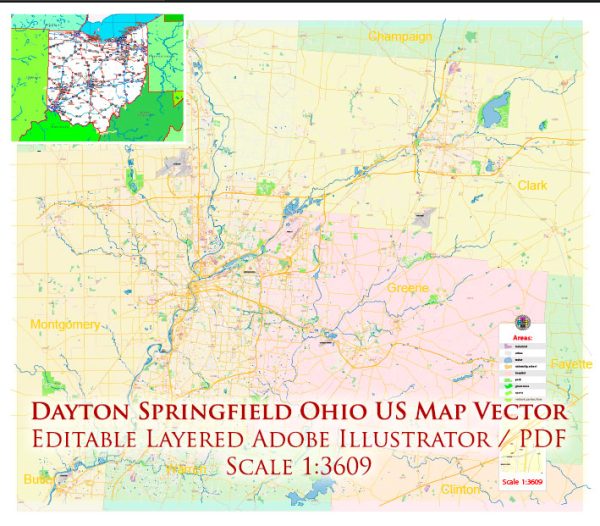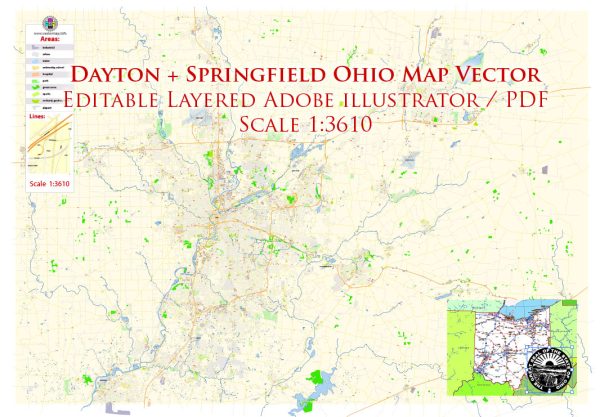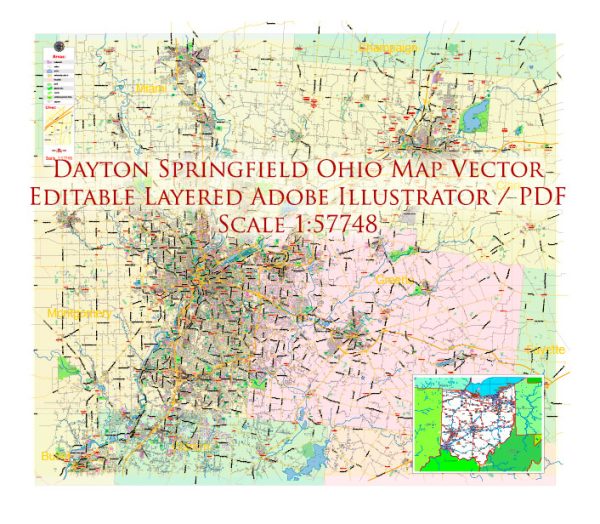The history of urban development in the Dayton-Springfield, Ohio, metropolitan area is a fascinating narrative that spans several centuries, marked by key economic, social, and cultural shifts. Here is a brief overview of the urban development in this region:
- Early Settlement and Industry (Late 18th Century – Early 19th Century):
- The Dayton-Springfield area was initially settled in the late 18th century, with Dayton officially founded in 1796 by a group of settlers led by George Dayton.
- The region’s proximity to waterways, including the Great Miami River, facilitated transportation and trade, contributing to early economic growth.
- In the 19th century, the Miami and Erie Canal (completed in 1830) further boosted trade and industry, fostering the development of small manufacturing enterprises.
- Industrialization and Innovation (Late 19th Century – Early 20th Century):
- The late 19th century witnessed significant industrialization, with Dayton becoming a hub for manufacturing, particularly in the production of cash registers, bicycles, and eventually automobiles.
- The Wright brothers, Orville and Wilbur, conducted their pioneering aviation experiments in Dayton, achieving the first powered, controlled, and sustained flight in 1903.
- The growth of industry and innovation led to population influx and urban expansion.
- World Wars and Postwar Growth (20th Century):
- During World War I and World War II, the Dayton-Springfield area played a crucial role in wartime production. The demand for goods and the influx of workers further fueled economic growth.
- Post-World War II, the region experienced suburbanization trends, with many families moving to newly developed suburban areas.
- Decline and Revitalization (Late 20th Century – Early 21st Century):
- Like many Rust Belt cities, Dayton faced economic challenges in the latter half of the 20th century, marked by deindustrialization and population decline.
- Efforts at urban revitalization began in the late 20th century, focusing on downtown redevelopment, infrastructure improvements, and cultural initiatives.
- Economic Diversification and Innovation (21st Century):
- The Dayton-Springfield area has undergone efforts to diversify its economy, emphasizing technology, healthcare, and education sectors.
- The region’s universities and research institutions have played a role in fostering innovation and entrepreneurship.
- Cultural and Recreational Development:
- The area has seen investments in cultural and recreational amenities, including museums, parks, and entertainment venues, contributing to a more vibrant urban experience.
- Challenges and Opportunities:
- Challenges such as economic disparities, infrastructure needs, and addressing vacant properties persist, but community efforts and strategic planning continue to address these issues.
The history of urban development in the Dayton-Springfield, Ohio, metropolitan area reflects the broader patterns seen in many American cities, with periods of growth, decline, and renewal, shaped by economic forces, technological advancements, and social changes.




 Author: Kirill Shrayber, Ph.D.
Author: Kirill Shrayber, Ph.D.